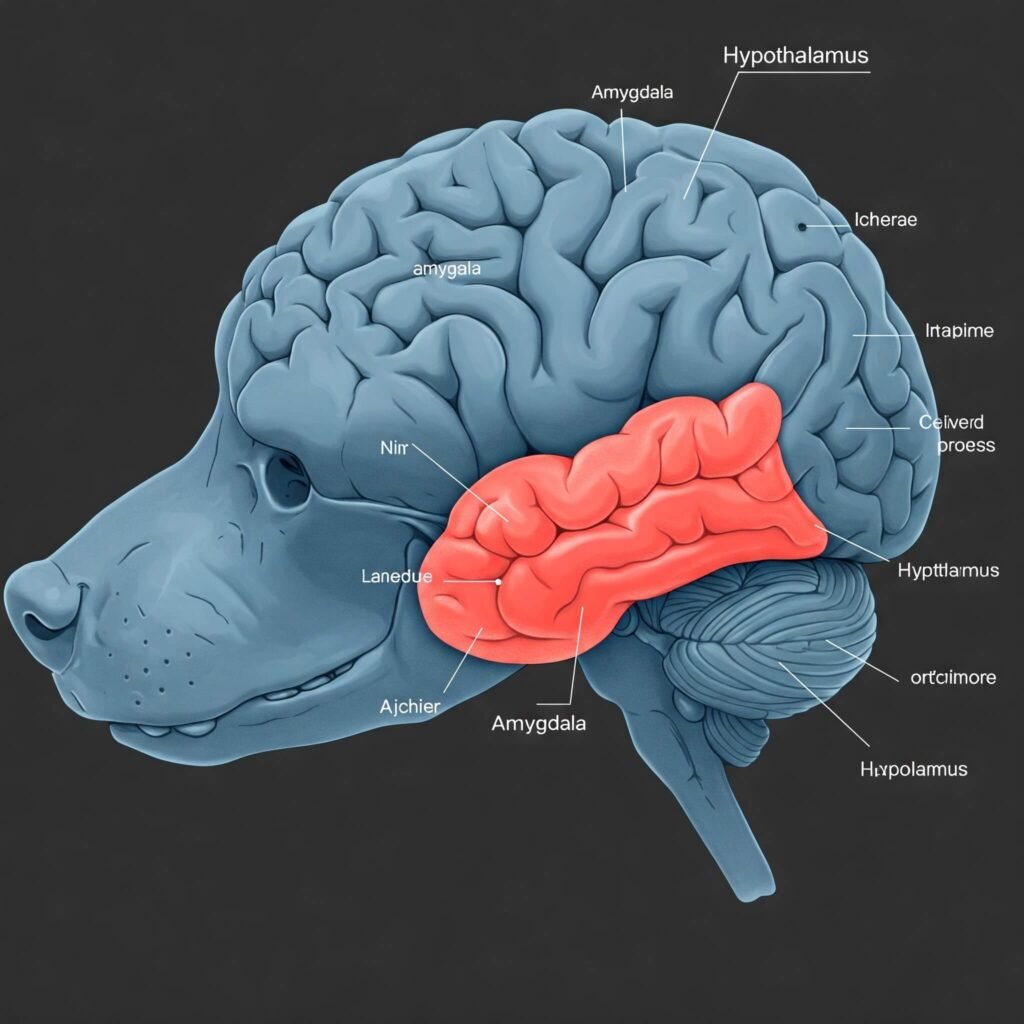Have you ever wondered? Can dogs feel emotions like humans? Indeed, it’s a common question. Fortunately, research now confirms it. Specifically, canine feelings are complex. They are, in fact, like our own. Therefore, let’s explore dog emotions. We’ll see, ultimately, what science reveals.
H2: The Science of Dog Feelings
Animal cognition studies have advanced. Specifically, researchers use MRI scans. Additionally, they use behavioral studies. Consequently, this helps us understand dogs’ minds. Thus, this research shows dogs feel emotions. Their emotions are, moreover, complex.
H3: Brain Structure and Emotions in Dogs
Dogs have brains like humans. Specifically, this is true in emotion-related areas. For instance, the amygdala and hypothalamus are similar. Therefore, this helps us understand dog feelings. Furthermore, hormonal responses are also key. Dogs change hormones with emotions. For example, oxytocin is released. This happens when they interact with owners. Thus, this shows they feel emotions.
H3: Behavioral Signs of Dog Emotions
Dogs show emotions with behaviors. For example, tail wagging is one. Additionally, facial expressions are another. Moreover, vocalizations also show feelings. Clearly, these signs prove dogs feel emotions like humans.

H2: Core Emotions: Do Dogs Feel Like Us?
While, canine feelings are complex, they may differ from human emotions. Nevertheless, dogs do experience core feelings. Therefore, can dogs feel emotions like humans?
H3: Positive Emotions in Dogs
Joy is shown with tail wags. Similarly, playful behavior shows happiness. Also, relaxed body language means joy. Thus, dogs feel emotions of joy. Affection is shown by licking. Likewise, cuddling also shows affection. They follow owners. Clearly, this shows dogs feel emotions of love.
H3: Negative Emotions in Dogs
Fear shows with trembling. Similarly, hiding also shows fear. Additionally, excessive barking means anxiety. Therefore, canine feelings include fear. Sadness is shown after loss. Specifically, they may become lethargic. Furthermore, they lose appetite. Thus, dogs feel emotions of sadness.
H2: Evidence: Do Dogs Feel Like Humans?
In short, dogs experience emotions. However, it might not be exactly like humans. Nevertheless, evidence shows complex emotions.
H3: Brain and Social Evidence
Dogs have mirror neurons. Specifically, these cells fire when they see actions. Consequently, this suggests empathy. Thus, dogs feel emotions deeply. Additionally, they form social bonds. Clearly, this shows attachment. Moreover, canine feelings include social bonds. Furthermore, they “catch” emotions. Thus, this shows awareness. Clearly, dogs feel emotions like humans.

H2: Decoding Dog Emotions
Understanding dog cues is, indeed, important.
H3: Interpreting Dog Signals
Watch their body language. Specifically, look at tail movements. Also, check facial expressions. Thus, this helps interpret canine feelings. Additionally, learn their vocalizations. Barks, growls, and whines mean things. Therefore, this helps understand dog feelings. Finally, consider the situation. Vet visits are different from playtime. Thus, this helps understand context.
H2: Supporting Dog Emotions
Support is, indeed, key for their well-being.
H3: Creating a Good Environment
Provide a safe space. Clearly, this helps positive dog emotions. Additionally, exercise and play are good. They release endorphins. Thus, this helps canine feelings. Moreover, social interaction is crucial. Positive interactions are needed. Finally, use rewards and praise. Clearly, this strengthens bonds.

H2: Further Resources
H3: Outbound Links
Animal cognition research: https://www.psychologytoday.com/us/basics/animal-cognition Dog brain structure: https://www.ncbi.nlm.nih.gov/pmc/articles/PMC3594165/ Dog body language: https://www.akc.org/expert-advice/advice/how-to-read-dog-body-language/
Conclusion:
Therefore, can dogs feel emotions like humans? Indeed, yes, they do. Understanding them helps. Ultimately, by paying attention, you can improve their life. Clearly, dogs feel emotions like humans.








































